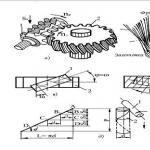Map Kemerovo region detailed with roads and cities:
Kemerovo region or Kuzbass is a subject of the Siberian federal district Russian Federation with a population of about 3 million people, more than 80% of whom live primarily in urban areas. The Kemerovo region is located in the southeastern part Western Siberia, in territories once inhabited by indigenous peoples - Siberian Tatars and Teleuts, borders the Altai, Krasnoyarsk territories, the Altai, Khakassia republics, Novosibirsk and Tomsk regions. Until the 40s of the 20th century, this region was part of Novosibirsk region with its center in the city of Novosibirsk.
Kuzbass today is a dynamically developing and important region for the country’s economy. More than 60% of coal from the total production of this fuel in the country is mined here. Its population is also employed in the metallurgical, chemical, and food industries.
Among the historical and cultural monuments of Kemerovo: the Znamensky Cathedral, the monument “In Memory of the Kuzbass Miners”, the regional drama theater, the coal museum, the monument to a stray dog, the Church of the Holy Trinity. Of particular interest to travelers visiting this distant region of Russia is the Krasnaya Gorka Museum-Reserve, located within the city on the site of an old coal mine. On the territory of the reserve there are both natural and man-made attractions (architectural structures, Gorelaya Mountain).
The Kemerovo region has a continental climate characterized by short but warm summers. Winter in this region is long and cold; the average daily air temperature in January is – 20°C. Among local rivers and lakes, a significant place is given to the Ob and its tributaries (Tom, Yaya, Chumysh), and Lake Berchikul (Volchye). The main natural attractions of Kuzbass are the Shorsky National Park and the Kuznetsky Alatau Nature Reserve, the first of which is located in the south, the second in the center of the region.
Also, interesting information about the cities of the Kemerovo region can be found in our articles:
Kemerovo on the map of Russia
Gornaya Shoria on the map
Kemerovo region from satellite
Novokuznetsk on the map of Russia
Satellite maps of cities in the Kemerovo region:
Kemerovo from satellite
In Western Siberia, in its southern part between the Altai and Sayan spurs. Kemerovo region is located. This is the most densely populated territory of Siberia. Using a satellite map of the Kemerovo region, you can find the main city - Kemerovo, as well as the largest settlement in terms of occupied territory - Novokuznetsk.
Modern online maps help you get an idea of the region and see its towns and villages. Moving through the online service with the mouse, you can see that the borders of the Kemerovo region limit the borders of the Krasnoyarsk Territory, the Altai Republic, as well as the Novosibirsk and Tomsk regions.
The region is located in a mountainous and hilly area and is distinguished by big amount reservoirs. The hydrography is represented by small rivers belonging to the Ob basin. Moving along the map of the Kemerovo region by district, you can find the most important river in the region - the Tom, as well as small water arteries:
- Condom;
- Mrassu;
- Sary-Chumysh;
Districts of Kemerovo region on the map
The region occupies about 100 thousand km2. If we look at the districts on the map of the Kemerovo region, we can see that it is divided into 18 administrative districts. The largest in area are Novokuznetsk and Tashtagol districts. They occupy southern part region. The main part of the small foothill areas is located in the northern and western parts of the region. The most sparsely populated and northern region is Izhmorsky. The number of people living here does not exceed 10 thousand people.
The main line of the Siberia highway runs through the northern part of the region, as the map of the Kemerovo region shows in the form of a diagram. In the region, it begins in Yurga and ends near Tashtagol.
The region is connected with cities and neighboring regions by the Trans-Siberian Railway, which is allocated important role not only in passenger transportation, but also in the delivery of goods, materials, military communications in the central part of the country and Siberia. You can view the directions of all transport routes at detailed map roads of the Kemerovo region.
Main railway stations:
- Novokuznetsk;
- Artyshta;
- Yurga;
- Mariinsk;
- Belovo;
- Fireboxes;
- Taiga.
If you look at the map of the Kemerovo region in detail, you can see airports near Novokuznetsk and Kemerovo. The region's air gates operate mainly domestic flights, but in the summer season they open routes on international routes.
Map of the Kemerovo region with cities and villages
There are 20 cities of regional subordination in the region, 7 of which have a population of more than 100 thousand people. On the map of the Kemerovo region with cities and villages, you can find any city of interest, see its location, neighboring settlements, streets and houses. Most of the large settlements “grew up” from mining villages in which coal and other minerals were mined. Today, the main wealth of Kuzbass is mined in 13 cities of the Kemerovo region. Among them:
- Prokopyevsk;
- Mezhdurechensk;
- Kemerovo;
- Guryevsk;
- Belovo;
- Kiselevsk.
If we look at the map of the Kemerovo region with villages, then medium and small settlements come into view. About 15% of the region’s total population lives in rural areas – more than 400 thousand people. They are mainly located near cities in flatter areas. There are very few settlements in the mountains.
Rural residents are engaged in their usual activities of cattle breeding and arable farming. Traditionally agricultural areas on the map of the Kemerovo region with settlements are considered:
- Chebulinsky;
- Promyshlennovsky;
- Izhmorsky;
- Krapivinsky.
There are large livestock farms here that produce meat, poultry, eggs, and milk.
Economy and industry of the Kemerovo region
The main system-forming industry of the region is mining. There are 2 largest coal basins in the region, which produce about 200 million tons of raw materials per year. Kuzbass also produces:
- ore;
- gold;
- silver;
- clay;
- sand;
- aluminum;
- limestone;
- lead;
- quartzite.
The industry of the southern part of the region is represented by enterprises of the mechanical engineering industry and processing plants. Yandex maps of the Kemerovo region allow you to see the location of industrial zones. In the south of the region there are several large metallurgical plants that supply the country with non-ferrous and ferrous metals.
A modest share of the budget comes from tourism and the service sector. But with the development of eco-tourism everything more people prefers to come to relax in the foothills in the summer or go skiing in the winter. In the Kemerovo region there are several water sources that are considered healing and attract busloads of tourists.
Administrative center Kemerovo region - city.
And now you can see what it looks like. 
- !!! Dear readers, there is a main article on my blog, where you will find not only maps of all subjects Russian Federation, but also maps of rivers, lakes, cities and much more.
Demonstrates the features of the south of Western Siberia. The region itself was formed in 1943, by a corresponding decree of the Supreme Soviet of the USSR. The main city of the region is Kemerovo, and the largest is Novokuznetsk. The region is limited by the Novosibirsk and Tomsk regions, the Altai and Krasnoyarsk territories and the Altai and Khakassia republics. The region is huge, and the population is only 3 million, so the average development density of this territory is lower than the national average.
The relief of the region is very diverse. A significant part of it is occupied by the Kuznetsk Basin. In the southeast, the landscapes are decorated with the Altai and Sayan spurs. In the west there is a low but extremely curious one. from the point of view of the manifestation of weathering forms, the Salair Ridge. The legendary landscapes of mountainous Shoria, with relict trees, adorn the south. It all shows map of the Kemerovo region.
The tectonic structure and history of the development of the territory have given the region many minerals, securely hidden in the bowels of the earth. Enormous reserves of hard and brown coal were formed in the Paleozoic. The occurrence of iron, polymetallic, and gold ores is associated with the origin of the West Siberian Platform. In addition to these treasures, there are also phosphorites, in unmeasured quantities, and a hundred types of various semi-precious and finishing stones.
Such a rich base has long made it possible to develop the mining, metallurgical, energy and mechanical engineering industries in the Kemerovo region.
The history of the Kemerovo region began by historical standards not so long ago - in the 18th century. It all started when one day Mikhailo Volkov was climbing up the river and saw a huge coal seam. This place is now Kuzbass. Industrial development of this land began only at the end of the century. Factories of industrialists appeared, whose names were already known throughout Russia. Since then, life here has been developing very actively, because mined coal needs to be sold, and in order to sell it, you need access to mines and factories. In general, this area has been developing quite actively since the discovery of coal; stagnation was forced only during the Second World War.
Coal, of course, is the main attraction of the region. What else can you see besides it? For example, rare rock paintings in the Tomsk Pisanitsa museum-reserve, the Tazgol eco-museum, rare relict plants can be seen in the black taiga, and wild animals such as wolverine, sable, and wolf can be found in dense forests.
The Kemerovo region is one of the breadwinners of Russia, with its unique history and architecture, which is constantly changing.
Often, while traveling through the Internet, I come across various interesting facts in articles. I especially love sites about interesting facts, I can hang out on them all day, it’s so exciting and educational.
If you think that my articles about this Russia are useful, then here are a few more articles about it on my website, as well as:
You may also be interested in the cities of the Kemerovo region:
| City | Year of formation | The area of the land,sq. km. |
| Anzhero-Sudzhensk | 1931 | 120 |
| Belovo | 1938 | 170 |
| Berezovsky | 1965 | 82 |
| Guryevsk | 1938 | 90 |
| Kaltan | 1959 | 32 |
| 1918 | 279 | |
| Kiselevsk | 1936 | 215 |
| 1925 | 128 | |
| Mariinsk | 1856 | 48 |
On the satellite map of the Kemerovo region you can see a large number of rivers and lakes. The most significant bodies of water are:
- Berchikul;
- Tom;
- Condom;
- Sary-Chumysh;
- Chumysh;
- Mrassu.
The subject is rich in mineral resources. Gold, iron and polymetallic ore, brown coal, phosphorites and other minerals are mined in the Kemerovo region. There are fertile black soils in the region, used in agriculture. The climate in the region is continental. Summer is short but warm, and winter is long and cold.
- The coldest month is January. The temperature drops to minus 20 degrees;
- The warmest is July. The air warms up to +20 degrees.
The flora of the subject is diverse. Tundra plants and alpine meadows grow in the mountains, and fir-aspen and pine forests grow in the foothills. There are steppes and forest-steppes. There are many nature reserves in the region. The fauna of the region is no less interesting. More than 20 species of animals and 120 species of birds live here.
Road communication of the Kemerovo region, routes
- Federal R255 "Siberia". Novosibirsk – Irkutsk;
- P384. Novosibirsk – Yurga;
- Novokuznetskaya Circle Highway(NKAD);
- P366. Altai region– Novokuznetsk;
- P400. Tomsk – Mariinsk;
- Kemerovo Ring Road (KKAD).
There are other highways in the region. On the online map of the Kemerovo region with borders it is noted that the Trans-Siberian Railway passes through its territory. There is a branch of the West Siberian railway. There are more than ten stations in the region. There are airports in Kemerovo and Novokuznetsk, and there are 4 more airfields in other settlements. During navigation, water transport operates along the Tom River.
Kemerovo region with settlements and districts
The map of the Kemerovo region with districts indicates that there are 19 cities of regional subordination in this region. The capital of the subject is Kemerovo. This city is inhabited by over 550 thousand people. There are 19 districts in total:
- Belovsky;
- Krapivinsky;
- Leninsk-Kuznetsky;
- Kemerovo;
- Izhmorsky;
- Guryevsky;
- Mariinsky;
- Topkinsky;
- Chebulinsky;
- Yurginsky;
- And others.
2 million 709 thousand people live in the region. These are mainly Russians, as well as Shors, Tatars, Teleuts and citizens of other nationalities. There are 20 urban and over 150 rural settlements located on the territory of the subject.
→ Kemerovo Region
Detailed map of the Kemerovo region
Map of the Kemerovo region with cities, districts and villages
| 1. | 11. () | 21. | 31. () |
| 2. () | 12. () | 22. | 32. () |
| 3. () | 13. () | 23. | 33. |
| 4. () | 14. () | 24. | 34. |
| 5. () | 15. () | 25. | 35. |
| 6. () | 16. () | 26. | 36. |
| 7. () | 17. () | 27. | 37. |
| 8. () | 18. () | 28. | 38. () |
| 9. () | 19. () | 29. | |
| 10. () | 20. () | 30. |
Satellite map of the Kemerovo region
Switch between satellite map The Moscow region and a schematic are produced in the lower left corner of the interactive map.
Kemerovo region - Wikipedia:
Date of formation of the Kemerovo region: January 26, 1943
Population of the Kemerovo region: 2,717,176 people
Telephone code of the Kemerovo region: 384
Area of the Kemerovo region: 95,500 km²
Car code of the Kemerovo region: 42
Districts of Kemerovo region:
Belovsky, Guryevsky, Izhmorsky, Kemerovo, Krapivinsky, Leninsk-Kuznetsky, Mariinsky, Novokuznetsky, Prokopyevsky, Promyshlennovsky, Tashtagolsky, Tisulsky, Topkinsky, Tyazhinsky, Chebulinsky, Yurginsky, Yaysky, Yashkinsky.
Cities of the Kemerovo region - a list of cities in Kuzbass in alphabetical order:
Anzhero-Sudzhensk city founded in 1897. The population of the city is 71,787 people.
City of Belovo founded in 1726. The population of the city is 72843 people.
City of Berezovsky founded in 1949. The population of the city is 46859 people.
City of Guryevsk founded in 1816. The population of the city is 23,089 people.
Kaltan city founded in 1946. The population of the city is 20947 people.
Kemerovo city founded in 1701. The population of the city is 556,920 people.
City of Kiselevsk founded in 1917. The population of the city is 90,980 people.
City of Leninsk-Kuznetsky founded in 1763. The population of the city is 96921 people.
City of Mariinsk founded in 1698. The population of the city is 39,091 people.
Mezhdurechensk city founded in 1946. The population of the city is 97895 people.
Myski town founded in 1826. The population of the city is 41,628 people.
City of Novokuznetsk founded in 1618. The population of the city is 552,445 people.
Osinniki city founded in 1926. The population of the city is 43,008 people.
City of Polysayevo founded in 1940. The population of the city is 26510 people.
City of Prokopyevsk founded in 1650. The population of the city is 196,406 people.
Salair city founded in 1626. The population of the city is 7589 people.
Taiga city founded in 1896. The population of the city is 24,183 people.
Tashtagol city founded in 1939. The population of the city is 23,107 people.
City of Topki founded in 1914. The population of the city is 27963 people.
Yurga city founded in 1886. The population of the city is 81,733 people.
Kemerovo region– Russian region in Western Siberia. Thanks to rich coal deposits, this region of Russia has a second unofficial name - Kuzbass. Administrative center - city Kemerovo. In addition to it, there are 6 other large cities in the region.
Climate of the Kemerovo region: the climate of the region has a pronounced continental character, namely sharp and frequent temperature fluctuations - both throughout the year and during the day. The main natural attractions of the region are concentrated in the western, eastern and southern parts. Notable are such natural monuments as the Rocky Mountains canyon, the Spassky Palaces rocks, the Pamyatnaya cave and various tracts and archaeological complexes.
Sights of the Kemerovo region: Tomsk pisanitsa, Itkarinsky waterfall, Tutal rocks, Linden island, Royal Gate, Museum of Ethnography and Nature of Mountain Shoria, Worship Cross, Cholkoy Museum, Kuznetsk Fortress, Coal Museum, Dostoevsky Museum, Drama Theater of Novokuznetsk, Memorial Museum of Military and Labor Glory of Kuznetsk Metallurgists, Park of Miracles, Kuznetsk Alatau, Mountain Shoria, Open-pit mines of Kuzbass, Celestial Teeth, Krasnaya Gorka Museum-Reserve, Spaso -Transfiguration Cathedral.




